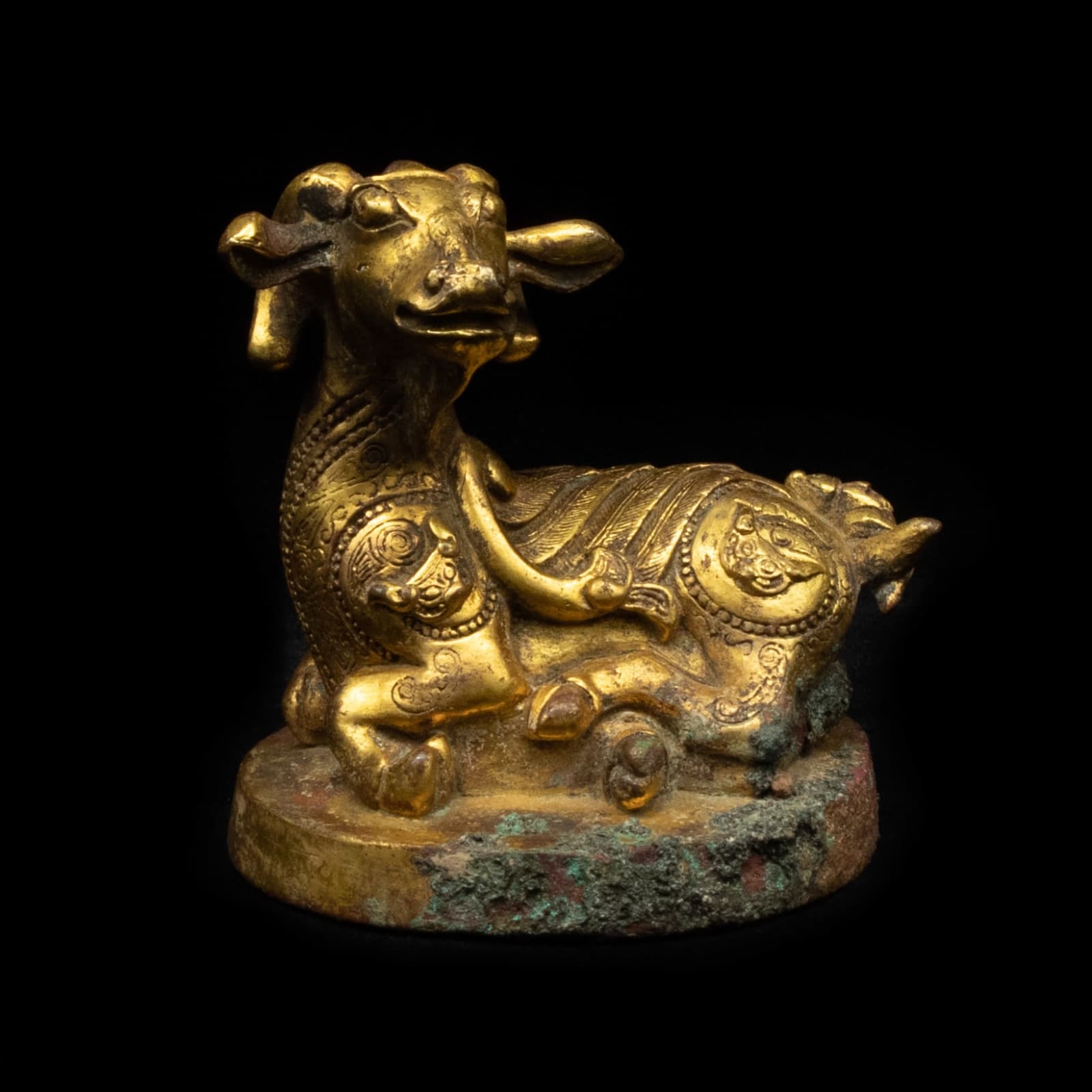Figure of a Recumbent Ram, 618 - 906 CE
Gilt bronze
height 7 cm
height 2 3/4 in
height 2 3/4 in
ES.3783
A vividly sculpted gilt-bronze figure of a recumbent Ram. Details on the beast’s hair and horns are articulated and resemble typical Tang imperial productions. Sown in reposing stance, one is...
A vividly sculpted gilt-bronze figure of a recumbent Ram. Details on the beast’s hair and horns are articulated and resemble typical Tang imperial productions. Sown in reposing stance, one is drawn to the figurines distinct characteristics: it's long curled horns to each side with ears falling just inside the tips of the horns, and its cloven hoofs clearly delineated. The features are finely presented on the current figure, with its outstretched neck turned left and looking forward, revealing gentile expression framed by a pair of ears and horns. The back of the head is cast with silky mane running down its neck. The hoofed feet rest eloped on the gilt-bronze stand. The body of the Ram is incised with motifs and symbols evidenced in similar pieces from the Tang dynasty.
The Tang Dynasty was an era of unrivalled wealth and luxury. The country was successfully reunified and the borders were expanded, pushing Chinese influence into new lands. Confucianism became a semi-religious instrument of the state; yet Buddhism continued to flourish, spreading into Korea and Japan. The arts reached new levels of sophistication. Poetry and literature flourished under the enlightened rulers. The Silk Road brought fortunes into China. Precious treasures were imported on the backs of camels from far away lands and bartered for Chinese silk, medicinal herbs, and pungent spices. Tang China was a multicultural empire where foreign merchants from across Central Asia and the Middle East settled in the urban centers, foremost among them the thriving capital of Changan (modern X’ian), a bustling cosmopolitan center of over two million inhabitants. Foreign traders lived next to native artisans and both thrived. New ideas and exotic artistic forms followed alongside. The Tang Dynasty was a cultural renaissance where many of the forms and objects we now associate with China were first created. Moreover, this period represents one of the greatest cultural outpourings in human history.
The Tang Dynasty was an era of unrivalled wealth and luxury. The country was successfully reunified and the borders were expanded, pushing Chinese influence into new lands. Confucianism became a semi-religious instrument of the state; yet Buddhism continued to flourish, spreading into Korea and Japan. The arts reached new levels of sophistication. Poetry and literature flourished under the enlightened rulers. The Silk Road brought fortunes into China. Precious treasures were imported on the backs of camels from far away lands and bartered for Chinese silk, medicinal herbs, and pungent spices. Tang China was a multicultural empire where foreign merchants from across Central Asia and the Middle East settled in the urban centers, foremost among them the thriving capital of Changan (modern X’ian), a bustling cosmopolitan center of over two million inhabitants. Foreign traders lived next to native artisans and both thrived. New ideas and exotic artistic forms followed alongside. The Tang Dynasty was a cultural renaissance where many of the forms and objects we now associate with China were first created. Moreover, this period represents one of the greatest cultural outpourings in human history.
